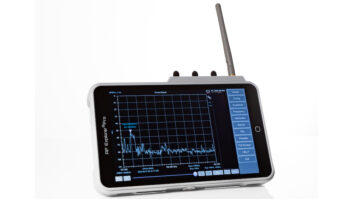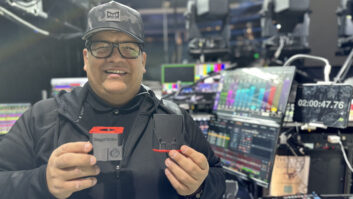Washington, D.C. (March 20, 2019)—Getting the world to sing in perfect harmony may be impossible, but getting its wireless mics harmonized might just happen. Despite a slow-moving process and opposition from some corners, the U.S. pro audio community is trying to get the World Radiocommunication Conference to consider global harmonization of radio frequencies used by wireless microphones—and that’s proving to be no simple task.
Harmonizing—or standardizing, if you prefer—wireless microphones’ frequencies across all countries would allow the mics to operate using the same radio frequency bands the world over, regardless of where users are. This would benefit electronic newsgathering (ENG) teams, as well as motion picture, touring theatrical and musical productions (known as Program Making & Special Events, or PMSE), and others, allowing them to cross borders and know their equipment will work without potentially running afoul of the authorities.
The global organization that rules on matters like these is the International Telecommunications Union (ITU), the United Nations’ specialized agency on communication and information, which holds the World Radiocommunication Conference every three to four years. Getting harmonization on the event’s agenda, however, is itself an elaborate process.
The next conference will be held this fall in in Sharm el-Sheikh, Egypt, and will run nearly a month—a necessity given that the ITU’s membership (roughly 200 countries) negotiates internationally binding treaties concerning radio communication at the event. One of the key parts of every conference is the finalization of the next conference’s agenda, so while the U.S. wireless mic industry is trying to get harmonization on the docket at this fall’s edition, it’s not so that harmonization can be decided this year; it’s so a decision can be made about whether harmonization would go on the agenda at the following conference, to be held in 2023.
Of course, the ITU wouldn’t need to rule on such matters if countries opted to follow each other’s lead about what frequencies are allocated for wireless mics, whether on a global basis or even in regional clusters. To some extent, this is already happening, as frequency moves made by the United States in recent times have caused a ripple effect in other parts of the world.
The FCC made significant changes to spectrum use when it auctioned off the 600 MHz band in 2017 and requisitioned the 700 MHz range in 2010 for the use of public safety and some commercial interests. Both ranges were previously used by numerous wireless mic systems, so to accommodate the demand and growth of content creation (that is to say, use of wireless systems), the FCC opened up alternate frequency bands for operating microphones. Most users now fall into the range of 941.5– 960 MHz, while bigger events like the Super Bowl additionally use 1435– 1525 MHz through a stringent coordination and pre-approval process to protect aeronautical mobile telemetry
(aircraft location data), the primary service within that band. Now some other countries are starting to follow the United States’ example, clearing wireless microphones out of the 700 MHz range and moving them to alternate bands—but not the same frequencies as the United States.
“Ofcom in the UK is transitioning the 700 MHz band, and in December they chose an alternate band of 960–1164,” notes Joe Ciaudelli, director, Spectrum Affairs, Sennheiser. “It is adjacent to the 941.5–960 MHz band that we chose in the U.S., but it doesn’t coincide or overlap. Further, in a lot of European countries, their alternate frequencies are 1350–1400 MHz, so you can see that segmentation is taking shape and we need to find at least small pockets of common denominators among countries so that users can take their equipment with them, especially ENG crews. Take natural disasters—when they happen, it’s the broadcasters who provide the timely, lifesaving information to the public, and the front end of that communication chain is wireless microphones. Cross-border coordination of ENG operations is critical during life-threatening disasters. You can’t go through the logistics of figuring out and organizing different equipment for every country where something may spontaneously happen.”
Ciaudelli readily admits that harmonization would benefit wireless mic manufacturers, too, but suggests that it would ultimately benefit end users and allow them to make better use of the spectrum: “Standardization lends itself to an economy of scale, but it also provides practicality, especially for networks and production companies that must cover events in multiple countries, such as global news, elections, conferences, international performing arts tours and sport events like the Olympics. It also promotes more efficient use of the spectrum because harmonization of one service—ENG—often leads to harmonization of other services operating in non-ENG bands.”







